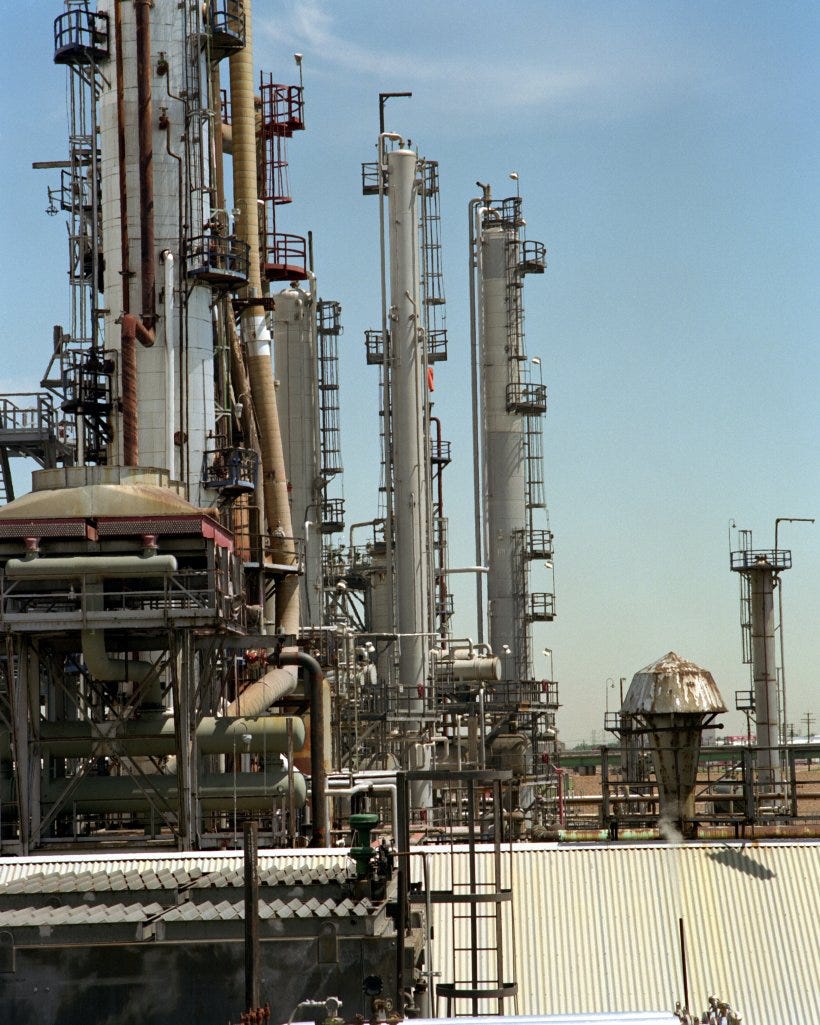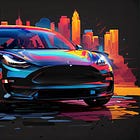Battery Electric Vehicles vs Hydrogen Fuel Cell Vehicles: A Comparative Analysis
An in-depth, unbiased comparison of battery electric vehicle and hydrogen fuel cell vehicle technology, efficiency, costs, infrastructure, sustainability impacts, and future potential.
The automotive industry is witnessing a paradigm shift with the rise of electric vehicles (EVs) and the introduction of hydrogen fuel cell vehicles (FCEVs). As the world grapples with climate change, the search for sustainable transportation solutions has never been more critical. This article will provide a comprehensive, unbiased (honestly!) comparison between Battery Electric Vehicles (BEVs) and Hydrogen Fuel Cell Vehicles, exploring their efficiency, infrastructure, costs, and sustainability impacts.
Key Takeaways:
Both BEVs and FCEVs can offer long ranges suitable for most driving, but rapid charging is far more accessible for BEVs currently.
Hydrogen fueling infrastructure lags far behind electric charging stations, creating a major adoption barrier for FCEVs.
BEVs demonstrate higher well-to-wheel efficiency, converting over 59% of electrical energy to power versus 25-30% for FCEVs.
Green hydrogen production methods are needed to reduce FCEV emissions but remain underdeveloped compared to BEVs charged by renewable energy.
While FCEVs face challenges, they may fill important niches like long-haul transportation that complement smaller passenger EVs.
How Battery Electric Vehicles Work
Battery and Powertrain Technology in BEVs
Battery Electric Vehicles, or BEVs, operate using a battery pack that stores electricity, which powers an electric motor to drive the wheels. The battery is typically a lithium-ion type, known for its high energy density and long lifespan. The electric motor, power electronics, and battery work together to form the powertrain, converting electrical energy into mechanical energy.
Charging Methods and Expanding Charging Infrastructure
Charging a BEV is akin to charging a mobile phone. You plug it into a charger, and it refills the battery. There are various charging methods that charge at different speeds, including:
Slow Charging: Using a regular household plug, typically taking 8-12 hours for a full charge.
Fast Charging: Utilising dedicated charging stations either at home, work or other destinations, that can charge a battery to 80% in around 4-6 hours.
Rapid Charging: Utilising dedicated charging stations that can charge a battery to 80% in around 30 minutes.
The UK has seen significant growth in charging infrastructure, with over 25,000 public charging points available as of July 2023.
Hydrogen Fuel Cell Vehicle Technology
How Hydrogen Fuel Cells Generate Electricity
Hydrogen Fuel Cell Vehicles (FCEVs) use a different approach to generate power. They utilise hydrogen gas, which is combined with oxygen in a fuel cell stack to produce electricity through a chemical reaction - not combustion. This chemical process produces electricity, as well as some heat and water as byproducts.
Specifically, hydrogen atoms are stripped of their electrons at the anode. The freed electrons travel through an external circuit creating an electric current to power motors or other devices.
Meanwhile, hydrogen's positively charged protons pass through a membrane to the cathode. At the cathode, the electrons reunite with the protons and oxygen atoms, producing water.
Fuel Cell Stack, Storage Tanks, Electric Powertrain
The fuel cell stack is the heart of an FCEV. It consists of many individual fuel cells that combine hydrogen and oxygen to produce electricity. The hydrogen is stored in high-pressure tanks, typically at 350-700 bar. Like BEVs, FCEVs also have an electric powertrain, including an electric motor and power electronics.
Refuelling Process and Hydrogen Supply Chain
Refuelling an FCEV is similar to refuelling a petrol car. It takes only a few minutes to fill the hydrogen tanks. However, the hydrogen supply chain is complex, involving production, transportation, and storage. Currently, most hydrogen is produced from natural gas, a process that emits carbon dioxide. There are also methods to produce hydrogen using renewable energy, known as green hydrogen, but these are still in the early stages of development.
Infrastructure and Logistics Comparison
The next section will delve into the differences in the maturity of charging station vs hydrogen fuelling station rollout, and examine the challenges related to hydrogen production, transport, and storage.
Charging Station vs Hydrogen Fuelling Station Rollout
The infrastructure for Electric Vehicles and Hydrogen Fuel Cell Vehicles is at different stages of development:
BEVs: The UK has a rapidly expanding network of charging stations, with over 25,000 public charging points, including fast-charging stations.
FCEVs: Hydrogen fuelling stations are less common, with around 15 publicly accessible stations in the UK as of 2021.
The disparity in infrastructure presents a challenge to the widespread adoption of FCEVs.
Hydrogen Production, Transport, and Storage Challenges
The hydrogen supply chain is complex and faces several challenges:
Production: Most hydrogen is produced from natural gas, a process that emits CO2. Green hydrogen production, using renewable energy, is still in its infancy.
Transport: Hydrogen is typically transported by road in high-pressure tanks or via pipelines, both of which are expensive and energy-intensive.
Storage: Storing hydrogen requires specialised tanks that can withstand high pressure, adding to the cost and complexity.
These challenges contribute to the current higher cost and lower availability of hydrogen fuel compared to electric charging.
Efficiency and Cost Comparison
Well-to-Wheel Efficiency, Range, and Fuel Costs
Efficiency: BEVs are generally more efficient, converting about 59-62% of the electrical energy from the grid to power at the wheels. FCEVs convert about 25-30% of the energy in hydrogen to power at the wheels.
Range: Both BEVs and FCEVs offer ranges suitable for most daily driving needs, with some FCEVs offering slightly longer ranges.
Fuel Costs: Electricity for BEVs is generally cheaper than hydrogen for FCEVs, although this can vary based on location and energy prices.
Higher Upfront Costs for FCEVs Currently
FCEVs tend to have higher upfront costs compared to BEVs, mainly due to the expensive fuel cell technology. However, government incentives and subsidies may help offset some of these costs.
Sustainability Impacts
Carbon Footprints and Emissions
BEVs: Emissions depend on the electricity source. If charged with renewable energy, BEVs can be nearly emission-free. YTD July 2023, the National Grid in the UK has generated 40% of electricity from fossil fuels, 35% from renewables and 20% from Nuclear and Biomass.
FCEVs: If hydrogen is produced from natural gas, CO2 emissions occur. Green hydrogen production methods can reduce emissions, but they are still under development.
Environmental Concerns Around Hydrogen Production from Natural Gas
Producing hydrogen from natural gas, known as steam methane reforming, emits CO2. Efforts are being made to capture and store these emissions, but the technology is still emerging.

The Road Ahead
Projections for Growth and Advancements for Each Technology
BEVs: The UK government has announced a ban on the sale of new petrol and diesel cars by 2030, with a focus on promoting electric vehicles. This policy is expected to drive significant growth in the BEV market.
FCEVs: Hydrogen fuel cell technology is still in the early stages of commercialisation. However, it's receiving attention as a potential solution for heavy-duty transport like buses and lorries, where BEVs may not be as suitable.
Challenges and Uncertainties Facing FCEVs in Competing with BEVs
FCEVs face several challenges in competing with BEVs:
Infrastructure: The limited number of hydrogen refuelling stations is a significant barrier.
Cost: The current higher cost of FCEVs and hydrogen fuel may deter potential buyers.
Technology Maturity: FCEVs are less mature than BEVs, and further advancements are needed to make them more competitive.
Conclusions
Key Takeaways on the Pros and Cons of Each Vehicle Type
Battery Electric Vehicles: Pros include higher efficiency, lower fuel costs, and a growing charging infrastructure. Cons include limited range compared to some FCEVs and dependence on the electricity grid's cleanliness.
Hydrogen Fuel Cell Vehicles: Pros include potential for longer range and quick refuelling. Cons include higher costs, limited infrastructure, and challenges related to green hydrogen production.
Role of Each Technology in Sustainable Transportation Future
Both BEVs and FCEVs have roles to play in a sustainable transportation future. BEVs are likely to continue dominating the passenger car market, while FCEVs may find niches in heavy-duty and long-range transport. Collaboration between governments, industry, and researchers will be essential to overcome the challenges and realise the potential of both technologies.
Final Thoughts
The comparison between Battery Electric Vehicles and Hydrogen Fuel Cell Vehicles is not a simple one-size-fits-all answer. Each has unique advantages and challenges, and the choice may depend on individual needs, preferences, and the specific use case.
As technology advances and the world moves towards cleaner energy solutions, both BEVs and FCEVs will likely find their place in the transportation landscape. Understanding the intricacies of these technologies is key to making informed decisions and contributing to a greener future.
Powering the Future: Where Will the Electricity for Electric Vehicles Come From in the UK?
As the United Kingdom gears up for a greener future, electric vehicles (EVs) are rapidly becoming the new norm on British roads. Driven by government policy, environmental awareness, and advancements in EV technology, the shift towards electric mobility is accelerating. But a question that often arises is, "Where will the electricity for electric vehicl…
Dual Charging at Home: can I have more than one EV charger?
Electric vehicles (EVs) are revolutionising the way we drive, offering a cleaner and more sustainable mode of transportation. But what happens when you have more than one EV in your household? Can you have two electric vehicle chargers at home? The answer is yes, but it's not as simple as it might seem. This comprehensive guide w…










The maths on the graphic on https://theevfeed.substack.com/p/battery-electric-vehicles-vs-hydrogen-fuel-cells is wrong. For the EV case you give a net efficiency of 87% - but 100% x 95% four times then x 82% is 67% - you then add 20% for regenerative braking - but this is typically less than 50% effective and only recovers braking losses not all losses - so the realistic net efficiency should be about 69%, not 87%. Same is true for Hydrogen. And ICE with regen.
🤣🤣